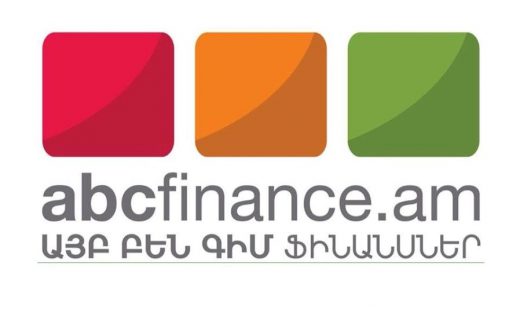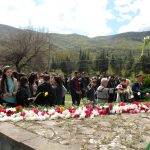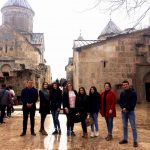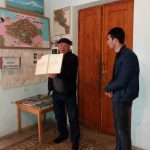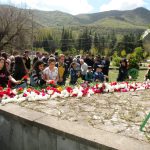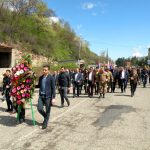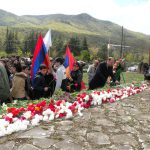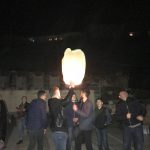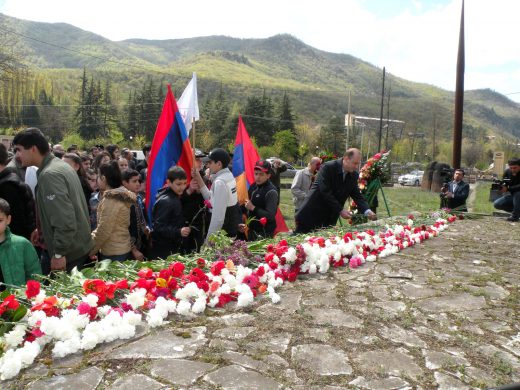
The Armenian nation is commemorating today the 104th anniversary of the 20thcentury’s first horrendous crime against humanity – the Armenian Genocide.
On this occasion, representatives of administrative, professorial staff of YSU Ijevan Branch, students, members of various spheres of Tavush region, regional and municipal authorities and citizens walk to the memorial dedicated to the Armenian Genocide victims and laid flowers in remembrance of the Armenian Genocide victims.
Then they visited Ijevan Historical-Cultural Museum and witnessed the exhibition on the Armenian Genocide.
Though April 24 is symbolically declared as a Day of Rremembrance on the national calendar, the actual pogroms, historically known as the Hamidian Massacres, date back to the late 19th century.
The Hamidian authorities – and later also their successors, the Young Turks – orchestrated the ethnic cleansing in Western Armenia, Cilicia and the Ottoman Empire, deporting and annihilating the Armenian population (as well as other ethnic minorities). They first targeted the males, aged between 15-45, whom they disarmed and killed to leave the rest of the population (the elderly, women and children) unprotected. What followed was a massive deportation, exile and pogroms. The Armenians were either forced to renounce Christianity or were marched into exile. Those who survived immigrated to the deserts in Mesopotamia, mainly to Deir ez-Zor, where they were eventually slain.
On April 24 1915, the Ottoman rulers organized the beheadings of the Armenian intellectuals in Constantinople. About 600 of them were arrested and put to sword on the way to exile. An estimated 1.5 million Armenians in 66 cities and towns and around 2,500 villages were killed. As many as 2,350 churches and monasteries were looted, about 1,500 schools and colleges – destroyed. The 1919-1920 Paris Peace Conference declared the estimated damages caused to the population in Western, and Eastern Armenia (amounting to 14,598,510,000 Francs and 4,532,472,000 Francs, respectively).
Since 1965, big crowds of people, including Armenians from Armenia and the Diaspora, and foreign guests, as well as governmnet delegations, head to the hilltop monument in Yerevan’s Tsitsernakaberd park to pay their tribute to the Genocide victims.
The six stone pillars of the memorial symbolize the 12 provinces which are now on the territory of modern Turkey.
The national cause for the Genocide recognition traces its roots back to the Soviet period, with Uruguay being the first world country to recognize the big crime in 1965. The Armenian Genocide has been so far recognized by 27 countries. Apart from states, also major international organizations and supranational unions, including the EU, the Council of Europe, European Movement International etc. have acknowledged the historical fact. The Genocide has received recognition also by many countries’ local governments (about 100 US states, provincial governments), and other bodies.





